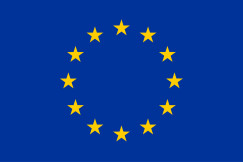Legislation
27 March 2025
Barriers to trade
Legislation
27 March 2025
1. Healthy, balanced and sustainable diets for all European consumers
2. Prevention and reduction of food loss and waste
3. A climate - neutral food chain in Europe by 2050
+4 more
Login / create an account to be able to react
-
5

New or changing technical regulations in different countries can create unnecessary and unjustified technical barriers to trade. Discrepancies between product rules can impose additional costs on exporting enterprises and restrict inter-EU trade. The European Commission’s objective is to prevent the creation of these barriers and help enterprises trade freely in the EU and beyond.
Editorial team
European Commission - DG SANTE
Topics
EU-27
EU Institutions
-
CoC aspirational objectives
-
-
1. Healthy, balanced and sustainable diets for all European consumers
-
2. Prevention and reduction of food loss and waste
-
3. A climate - neutral food chain in Europe by 2050
-
4. An optimised circular and resource-efficient food chain in Europe
-
5. Sustained, inclusive and sustainable economic growth, employment and decent work for all
-
6. Sustainable value creation in the European food supply chain through partnership
-
7. Sustainable sourcing in food supply chains
-
Share
To help prevent the creation of technical barriers to trade, the Commission manages two notification procedures
- the 2015/1535 notification procedure at EU level
- the TBT notification procedure at WTO level
The Directive (EU) 2015/1535 also known as the Single Market Transparency Directive allows the European Commission and EU countries to examine technical regulations for products and information society services (online services including e-commerce) that other EU countries intend to introduce. It prevents the creation of new technical barriers to trade by ensuring the compatibility of national legislation with EU law and internal market principles. The procedure also helps prevent further legal action by the Commission.
According to the directive, EU countries must inform the Commission of any draft technical regulation before its adoption. Starting from the date of notification, a three-month standstill period comes into place, during which the EU country must refrain from adopting the technical regulation in question. This procedure enables the Commission and other EU countries to examine the proposed text and respond.
The Commission and other EU countries may submit a detailed opinion or comments to the draft if they deem that the notified text may create barriers to
- the free movement of goods
- the free provision of information society services
- EU secondary legislation
The submission of a detailed opinion prolongs the standstill period by another three months and the EU country that has notified the draft regulation must explain what it intends to do in response. The Commission can also block a draft for a period of 12 to 18 months if EU harmonisation work is planned or is already underway in the same field.
At the end of the 2015/1535 procedure, the EU country has to submit the final text of the regulation to the Commission and other EU countries. This allows them to check whether their opinions were taken into account.
The notified drafts and their translations in all EU languages are available in the Technical Regulations Information Systems database (TRIS).
The TBT notification procedure helps prevent the creation of international technical barriers to trade. It was introduced by the Agreement on Technical Barriers to Trade (the TBT Agreement), a multilateral agreement administered by the World Trade Organisation (WTO). It gives participants advanced knowledge of new technical regulations or conformity assessment procedures envisioned by other countries. The EU’s participation in the TBT Agreement helps businesses in EU countries access markets outside the EU.
To avoid any potential technical barriers to trade, WTO Members submit national legislation at draft stage to other members of the TBT Agreement. They can then assess the impact on their exports and identify any provisions breaching the agreement.
While allowing all WTO Members to maintain their right to adopt regulations, the TBT Agreement aims to
- prevent the creation of unnecessary and unjustified technical barriers to international trade
- prevent the adoption of protectionist measures
- encourage global harmonisation and mutual recognition of technical standards
- enhance transparency
It also helps enterprises prepare their products and services for new technical requirements. A dialogue between WTO Members can result in the amendment of a notified measure. The measure can even be withdrawn by the proposing country.
The notifications and most notified drafts are available in the TBT database. The database also provides detailed information on the TBT Agreement.
Related regulations:
- Directive (EU) 2015/1535 laying down a procedure for the provision of information in the field of technical regulations and of rules on Information Society services (codification)
Comments (0)
See also
-
5
Nutrition and Health Claims
- Categories
- 2. Prevention and reduction of food loss and waste 3. A climate - neutral food chain in Europe by 2050 4. An optimised circular and resource-efficient food chain in Europe +3 more
-
17
Regulation on aid compatible with the internal markets
- Categories
- 2. Prevention and reduction of food loss and waste 3. A climate - neutral food chain in Europe by 2050 4. An optimised circular and resource-efficient food chain in Europe +3 more
-
4
Renewable Energy Directive
- Categories
- 2. Prevention and reduction of food loss and waste 3. A climate - neutral food chain in Europe by 2050 4. An optimised circular and resource-efficient food chain in Europe +3 more




